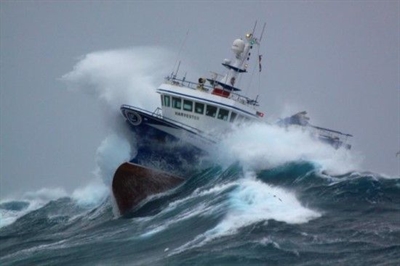The Perfect Storm Meets the Perfect Ship: The Changing Face of Partnering in Tech and Biopharma
In most industries, change is now so rapid that we often have trouble seeing through the fog of day-to-day demands in front of us. The effects we experience, react to, and feel most keenly may be local—our jobs, our companies, our partners, our industries—but the bigger picture behind it is global, and the frequent wind shifts of global trade, the interconnected worldwide economy, and changing consumer and customer behavior cannot always be foreseen. Instead of being able to ride out the proverbial “calm before the storm,” we have to navigate our way through a series of storms, each one seemingly more disruptive than the next.
This is certainly no less true in the fields of biopharma and technology partnering, two industries from which so many of our ASAP members hail.
The technology sector is still undergoing a transition from traditional channel management to ecosystem management, from multipartner alliances and channels to ecosystems of hundreds of partners at various levels—all very challenging to keep tabs on, much less manage and oversee. Go-to-market efforts that formerly might have involved just two or three companies may now be mounted by 10 or 15 ecosystem partners—or more—leveraging their strengths and customer knowledge to sell solutions together.
The sea change is happening in biopharma as well. The space has seen increasing partnerships between technology and biopharma companies, like those involving digital therapeutics startups, service providers, diagnostic companies, and even ecosystem-like multipartner deep engagements—all as pharma companies must still maintain their excellence in asset-based product partnerships in order to remain competitive.
Even the language can get confusing. Alliances? Partnerships? Relationships? Ecosystems? We’ve heard from some who say they “don’t do alliances—it’s just partnering now.” Others may prefer the term alliances to partnerships from a legal or perhaps philosophical standpoint. Still others put the emphasis on ecosystems as the direction everything is heading.
What’s going on? How to make sense of these shifting winds and rolling waves of disruption? Is there a perfect ship that can make way through the perfect storm?
The passage through these choppy seas is not always clear, but I believe the ASAP community—our “ship,” if you will—is perfectly positioned to illuminate the fog, avoid the icebergs, and take advantage of the opportunities provided amid all these developments. Here’s why:
- Throughout its two-decade-plus history, ASAP has been driven by its mission to collect and promote the best partnering practices of both biopharma and tech companies, along with other industries that utilize partnering to create value.
- Early on, ASAP predicted and began to prepare its members for frequent, if not routine, partnerships between health care/biopharma and tech companies.
- We know that complex ecosystems and multipartner relationships require modified, agile best practices to be successful. ASAP has long been working tirelessly to provide solid education and actionable guidance in these areas.
- We now have the opportunity to take advantage of the partnering skills as defined in The ASAP Handbook of Alliance Management and supplement these learnings with other informative insights that continue to be unveiled throughout all of ASAP’s media and publications—including Strategic Alliance Quarterly, Strategic Alliance Monthly and Weekly, and ASAP Netcast Webinars.
- Finally, there’s the unparalleled access to education and networking provided by ASAP conferences and other events, such as the upcoming European Alliance Summit in Amsterdam (Nov. 14–15) and the Global Alliance Summit in Tampa (Mar. 16–18, 2020).
It’s all there and yours for the taking. Want to get on board with the latest partnering practices in the technology and health care/biopharma industries? Look no further than this seriously skilled community of practitioners—“our ship.” Together, we’re setting a course for the future of alliances and partnering.

